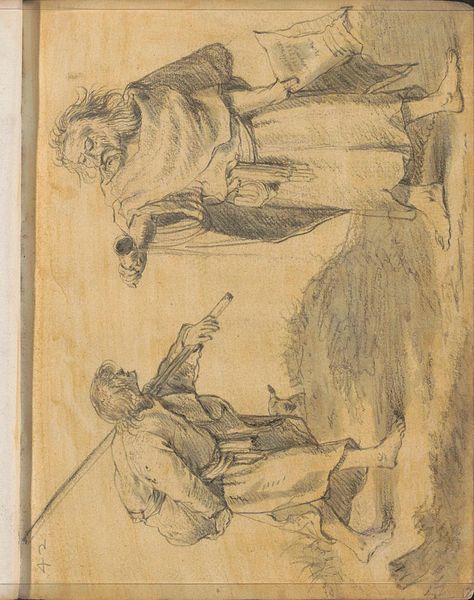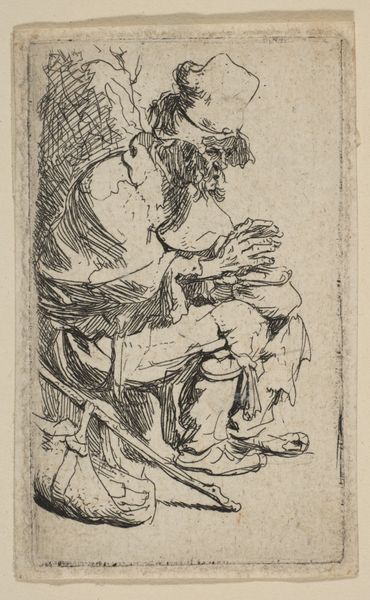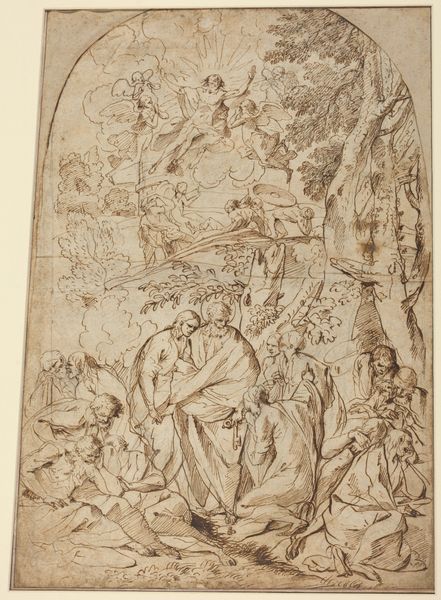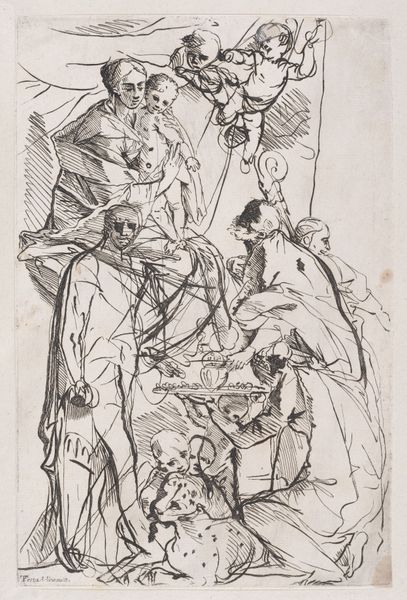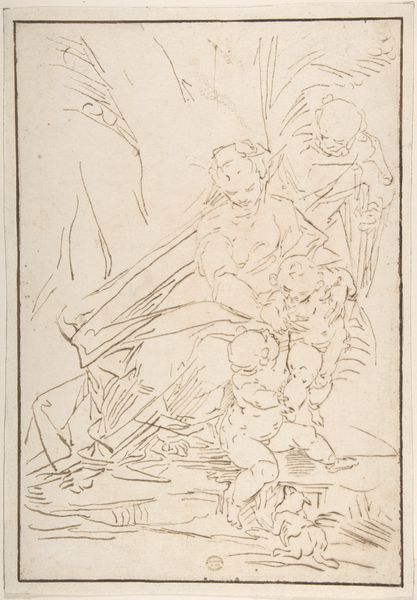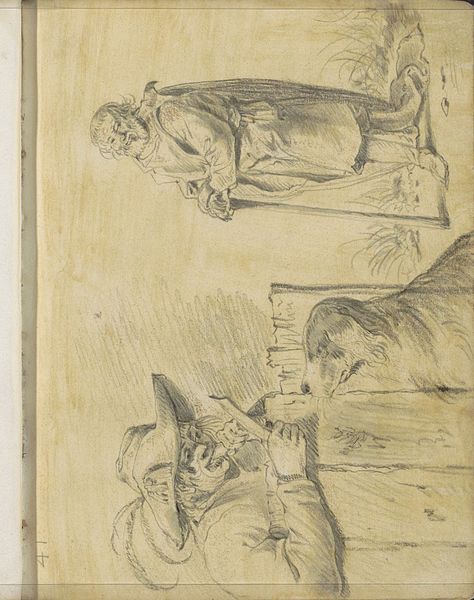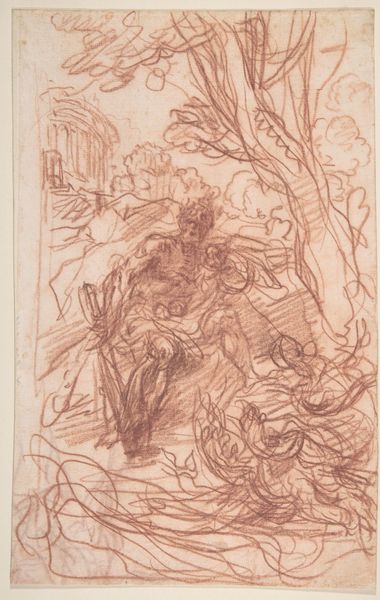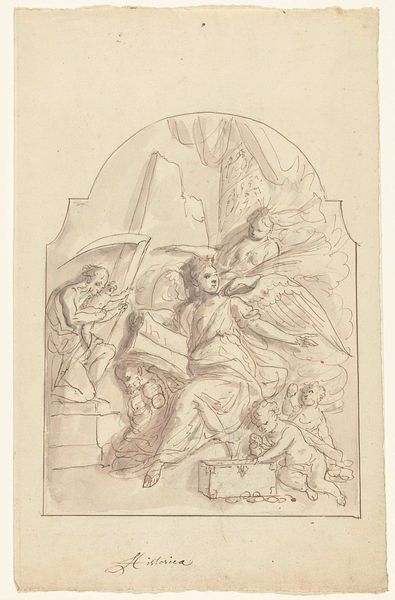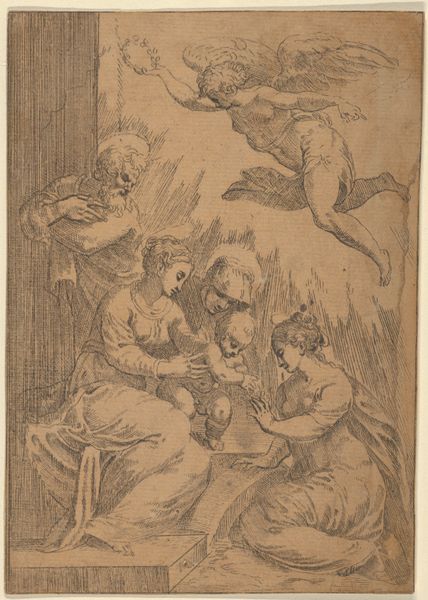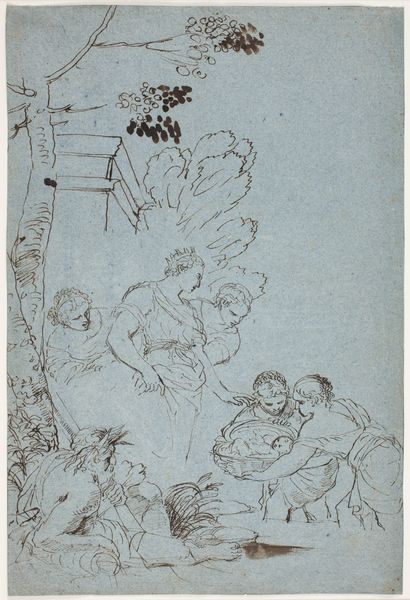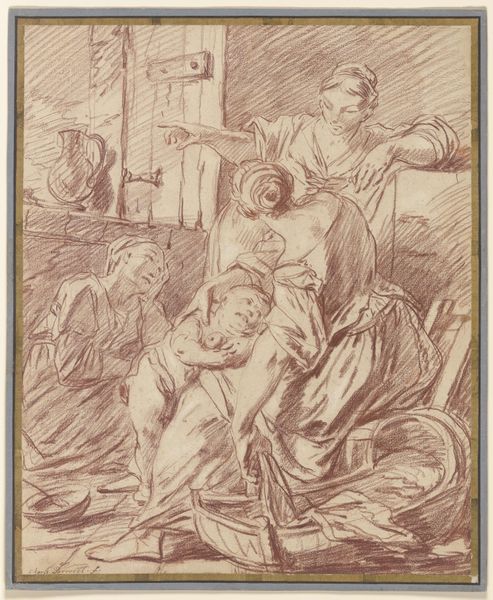
drawing, pencil, pen
#
drawing
#
baroque
#
pencil sketch
#
figuration
#
pencil
#
pen
#
history-painting
Copyright: Rijks Museum: Open Domain
Curator: Standing before us is Hendrick van Beaumont's 1696 drawing, "The Entombment of Christ." It's rendered primarily in pen and pencil. Editor: The sepia tones immediately strike me. It feels raw, almost like a hurried sketch, yet there's a profound sense of grief emanating from the composition. Curator: Absolutely. Consider the period, the late Baroque, and how the institutional Church deeply influenced artistic themes. Beaumont is working within well-established visual traditions, representing Christ's descent from the cross. But it's fascinating how this scene continues to hold immense emotional power. Editor: For me, that power comes from the visible struggle in the figures carrying Christ. The weight of his body, but also the weight of loss. It’s an intersectional portrayal of suffering—human suffering but also the profound social upheaval the crucifixion represents. Do you think it could also serve as a silent criticism of the Church back then? Curator: Possibly, yet Beaumont's position within the artistic and social circles likely situated him in a more compliant stance. We also cannot deny that depictions like this are important elements within European political and societal events. However, the way that art serves as a cultural mediator deserves attention as much as the actual politics within the drawing itself. Editor: That's valid, yet the drawing’s emotive core goes far beyond simply affirming religious dogma. Note how the pencil work isn't precise but creates such incredible shading around their faces. It captures a universality of mourning that goes beyond any one specific religion or political regime. Curator: It highlights, as you said, the weight of grief—something consistently commissioned, revisited, and consumed throughout history. What do we take from these constant commissions? Perhaps we seek assurance and healing. Editor: Or to understand and recontextualize trauma through symbolic representation. A tool both for expressing sorrow and navigating its complexity within the cultural zeitgeist. Thanks for the chat! Curator: Indeed. A compelling look at faith, politics, and the profound expression of collective pain—certainly a rich piece for further pondering.
Comments
No comments
Be the first to comment and join the conversation on the ultimate creative platform.
